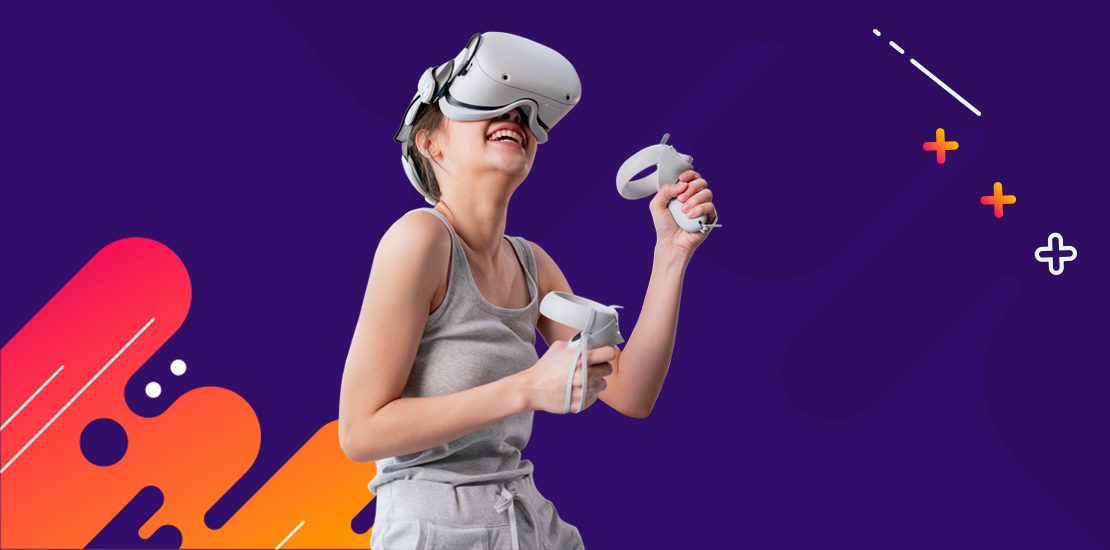April 30th, 2024
Category: virtual reality
No Comments
Posted by: Team TA

Sports is one industry that aggressively and effectively uses new technologies. With the recent leap that Virtual Reality (VR) has taken, the sport experience is being magnified and becoming more immersive in practically every possible field, from viewing sports to training and recruiting athletes. Many organizations, viewers, athletes, coaches, gamers, and fans now enjoy sporting data, player analytics, smart stadiums, and wearables because of this trend. According to a Sheer Analytics and Insights analysis on the global VR technology services in the Sports and Entertainment industry, the global market was valued at $2.3 billion in 2020 and is anticipated to grow to $56.7 billion by 2031.
Here are some ways virtual reality is revolutionizing the sports world and redefining how people view sports.
1. View Sports through VR
Fans who can’t afford to fly halfway around the world to watch their favorite teams compete benefit significantly from VR sporting events. Players only need a VR headset and an app to enjoy the game. They can watch the entire game as realistic as reality without leaving the comfort of their house. The first Olympic broadcast that was accessible with VR headsets and related apps was the 2016 Summer Olympics in Rio de Janeiro. Several big-league teams have also realized the potential of the medium and have made considerable investments to give their fans a new experience.
2. Virtual Reality Performance
Using this technology, the athlete can fine-tune specific areas of their performance, such as a golfer’s swing or a track cyclist’s individual pursuit time. Athletes’ performance can be improved by adjusting certain factors, such as their biomechanics or technique, according to three-dimensional systems. Player performance can be improved using VR simulations. The player fights against his opponent just like in an actual match in situations that VR developers can recreate for training and practice. Errors are noted, examined, and feedback is considered. The usage of VR-simulated training has other advantages for unity among teams. Players gain an advantage psychologically and can analyze their strengths and weaknesses to improve their game strategy.
3. Using VR to Train Teams
Virtual reality (VR) in sports training is beneficial with the repetition of the skills and knowledge needed for the finest athletic performances. VR in sports coaching enables coaches to evaluate and optimize each player’s and the team’s training needs. With virtual reality, coaches may train more effectively by observing and analyzing the game from the players’ point of view. STRIVR is a prime example of a VR training program for sports. It makes VR training videos. These videos are taken during practices from the perspective of the player. Then, by using VR headsets to visualize, these players can undergo repetitive, realistic instruction.
Soccer players can be taught to head a ball without impact, AFL players can be taught how to mark a high ball without the genuine threat of being smashed by the opposition, and running backs can be taught how to pick a line through a defensive line without losing their heads. This, paired with VR’s increased immersive nature, could result in an upsurge in VR adoption.
4. Smart Stadiums
Utilizing cutting-edge technologies like artificial intelligence (AI), facial recognition, self-parking cars, and sensors, smart stadiums aim to provide better and more advanced amenities. The use of VR headsets in stadiums for enhanced sports has the potential to create hype and excitement, resulting in a spike in ticket sales. The smart stadium experience will depend heavily on fan interactions. The fan experience should be smooth and stunning from the pre-event ceremony to the time they leave the stadium. This includes everything from buying tickets, getting to the stadium, finding their seat or the closest bathroom, and being immersed in the game and related content.
5. Promoting Creativity in Sports Equipment Design
In the design of sporting goods like running shoes, virtual reality is also widely used. Innovation is a key element in this industry as the bar for athletic achievement rises. Sportspeople are always trying to get stronger, faster, and more endurance. They constantly push the limits of what their bodies are capable of, which fuels the sports apparel and equipment market. This industry uses VR technology to stay up with the ongoing pursuit of sporting perfection.
6. Through Gamification, VR can improve Sports Participation
The younger demographics like playing video games, and many find them more appealing than sports. If you combine the two, you’ve got an effective strategy. When you gamify sports or exercise, they become more enjoyable. VR hololens or glasses allow all kinds of games to be played, encouraging more people to participate in sports.
VR in Sports Technology: Take Homes
With its new games and formats, Virtual Reality will mark the beginning of a new era in sports and gaming. VR might act as a link between the gaming industry and digital firms working together with sports organizations to co-create. Major international and domestic events are held at venues that utilize smart sports technologies, including the Board of Control for Cricket in India (BCCI), Indian Premier League (IPL), Melbourne Cricket Association, and New Zealand Cricket.
As professionals who specialize in creating unique, interactive, and immersive experiences using VR technology services, we offer innovative solutions to transform and promote the sports industry.